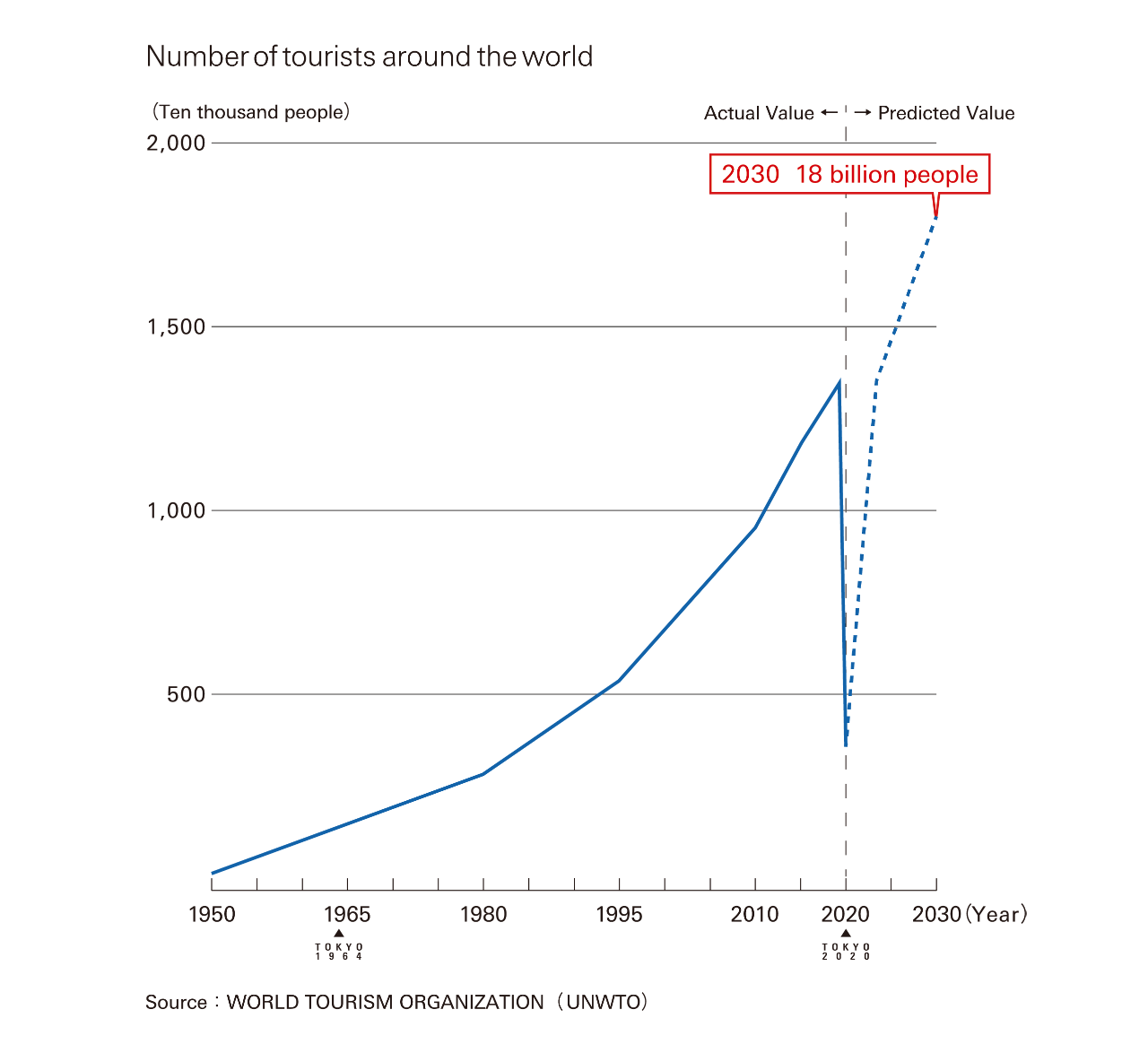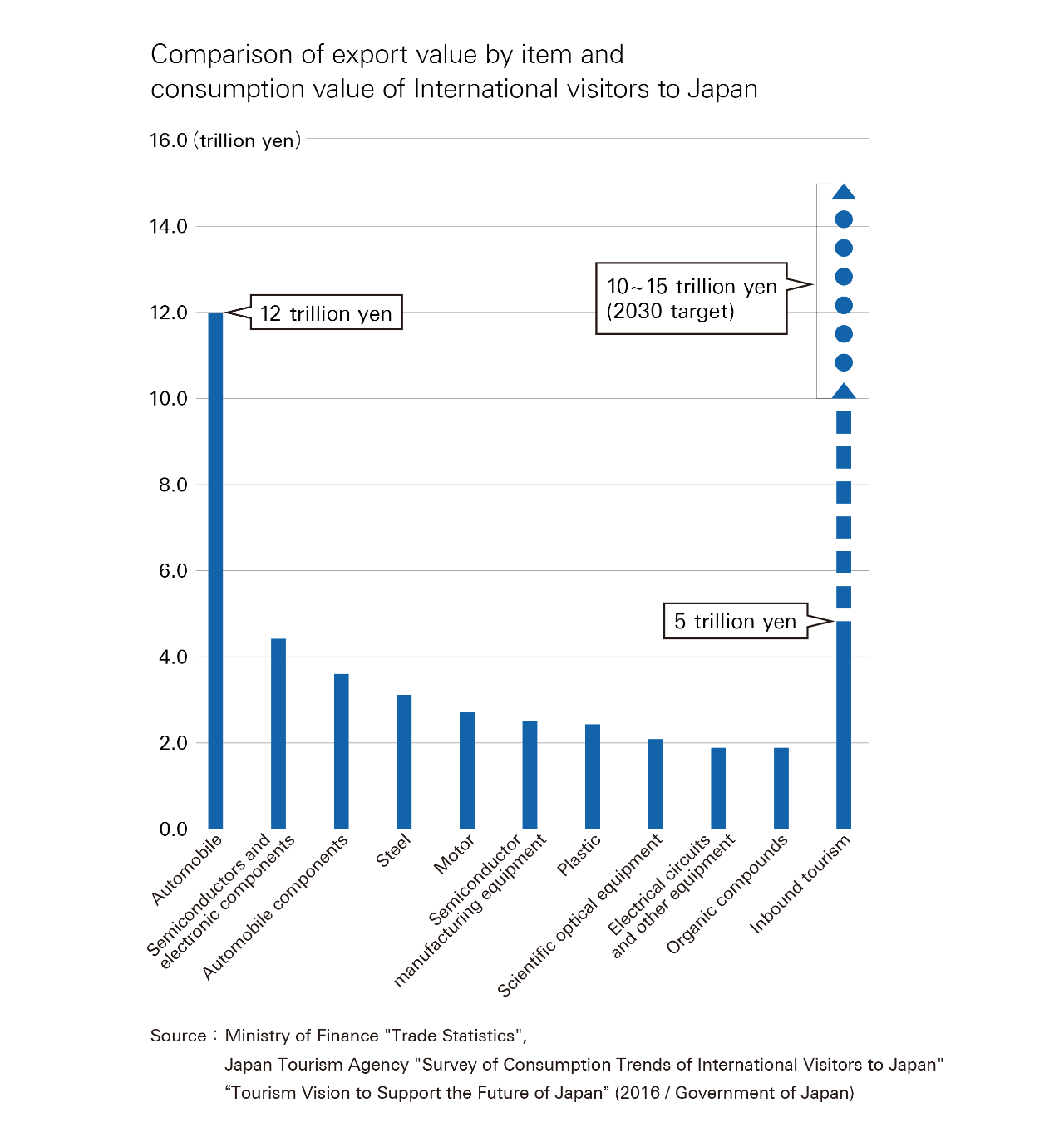A Tourism Resolution
Chapter 1 Focus on Asia.
What is a hotel?
When you focus your sight on the allure of the climate and topography of the world, something that lies ahead suddenly comes into view: the hotel. Why? Because a most well done hotel is the ideal interpretation of its locality; it itself is the very topography, climate and cultural features of its setting. But why do we not just fix our eyes on nature itself? For instance, if you concentrate on the Japanese archipelago, it should be enough to express a litany of its beautiful mountains, rivers and streams. Because it is a chain of volcanic islands whose land was pushed up from the seabed, the land is steep and there is an abundance of rivers and waterfalls. Japan’s seasons are diverse and rich with change; the subjects of which we could and should speak are limitless. If we are to speak without fear of being misunderstood, however, we must point out that there is nature everywhere in the world. We are truly inspired and impressed when we find the vestiges of a long period of human habitation in one place and when we see, preserved in some astounding form, the products of wisdom gained by unbroken inheritance. Specifically, we sense from the sight of a line of villages and houses the condensation of an ingenuity, wisdom and aesthetics based on the unique needs of individual localities. It’s because we become keenly aware of the self-respect of people who have lived their lives modestly yet tenaciously and bravely in the bosom of nature as human beings.
The heat, the cold, in fact, much of the wisdom of survival in each locality can be assessed from the appearance of the homes found there: the material and slope of the roof; the shape of the tiles; the depth of the eaves; the construction of the entrance and the size of the windows. Those are the results of having been able to survive, as well as the products of life and lives continuously connected through time. As humans, we live, building houses, installing gardens, soiling, then cleaning. That’s how we lead our lives.This is why we’re far more impressed with seeing how people have related and interacted with nature than with the splendor of pure nature or wilderness. However, with the spread of technology, the world is heading toward homogenization.
Regrettably, convenience and efficiency will easily transform the lifestyles that we’ve cultivated over hundreds of years. It’s up to the people who live in each area whether they choose tradition or convenience, but the outlook is not necessarily favorable.
Convenience is not restricted to the rich. People increasingly gather in the cities, depopulating villages increasingly die out, and convenience negatively affects the countryside. Just as the contours of solitary islands are encased in massive amounts of plastic waste, along with depopulation and the deterioration of rural houses, a certain pride people once fostered in their way of life is crumbling and disappearing.
On one hand, the world is entering “the era of drift”. In any one region, it is not simply the people who live there, but others, people who want to experience that area’s richness and splendor, who are beginning to move there. Our values have begun to change: work, happiness, and the destination of intelligence. I feel it’s likely that in this global age if we are not going to lose our pride in experiencing and appreciating the blessings of this living earth, we must transfer our interest to concern for the preservation of the environment and the cultural value that lies in the various localities themselves. The rewards of these efforts have been emerging gradually.
Today, hotels are not simply places that offer a safe place to stay and a good night’s sleep and a replenishment of resilience in order to support people’s travels. Instead, they are establishments for comprehending and appreciating the dormant nature, and clearly and impressively expressing it to guests, through architecture. They are also places where people will enjoy service that includes a superb harvest and preparation of the bounty of local foodstuffs.
There is no denying the fact that it is up to the hotel’s carefully considered construction and layout whether we notice the comfort of the breeze of a plateau, or recognize anew the serenity of a beach or understand that the light varies depending on the location. Through hotels, perhaps along with economic development born from serving visitors, there may be a ressurection of the joys of living in that place.
People have special affection for the mountains and rivers of their hometowns. And they inevitably find the cuisine of their hometowns more delicious than that of other towns. Of course, it’s good to have that special feeling towards the hometown in whose bosom one was raised. And yet, if one were to tell the world about the charms of one’s hometown, perhaps it might be better to tone down one’s adoration and glorification.
On one hand, the psychology of the guest is such that he will accept without question the good fortune that befalls him. So he is liable to incline both ears to the favoritism displayed in boasts about ones hometown, delight in his good luck at being able to visit, and will want to take home its foodstuffs and other products as souvenirs. It may be that the fame of most of the famous places and famous products came about as the psychology of the visitor revealed itself.
However, going forward, in thinking about industry of the future, I think it’s necessary to reexamine the possibilities of tourism as a way of comprehending and delineating each region, based on a new granularity and objectivity. This is because tourism is thought to be the largest industry of the 21st century. Through manufacturing, Japan achieved postwar reconstruction, rapid economic growth and rose to a position of economic powerhouse. However, it seems that the first chapter of this legend has come to an end. And the next chapter has already begun, with our traditional culture and topography and climate as resources. This I believe.

































































































